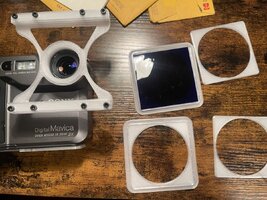ninj
Print Addict
- Joined
- Dec 28, 2011
- Messages
- 121
- Reaction score
- 153
- Points
- 193
This article (https://www.smith3d.com/unraveling-the-mystery-is-3d-printing-food-safe/) is about a peer-reviewed study of food safety of 3d printed parts. Well worth reading, but they finish with:
"I have concluded that 3D printed parts can be cleaned to operating room standards. Does this mean they are food safe? Yes, and a small no. Yes, because they can be cleaned and can hold dry foods with no issues. Possibly No, because with liquids, they can cause the color additives and binders used in the filament to POSSIBLY leach out. It is rare, but still possible. Also, if the 3D printed item is to hold liquid, it is best to coat in resin and epoxy as stated above. "
They also say about lead contamination: "There is more lead in your tap water than a full 3d printed part. The area the food touches is not that much surface area, and the amount of lead in the area food touches is extremely low since it is a fraction of the 0.007 grams that could potently leach into the part. "
And: "The possible amount of lead being leached, or friction rubbed onto filament is very low. You will get more exposure to lead from changing your nozzle then from the filament. In fact studies done have shown that consumers who use the standard brass key, are exposed to 19 times the safe amount of lead."
"I have concluded that 3D printed parts can be cleaned to operating room standards. Does this mean they are food safe? Yes, and a small no. Yes, because they can be cleaned and can hold dry foods with no issues. Possibly No, because with liquids, they can cause the color additives and binders used in the filament to POSSIBLY leach out. It is rare, but still possible. Also, if the 3D printed item is to hold liquid, it is best to coat in resin and epoxy as stated above. "
They also say about lead contamination: "There is more lead in your tap water than a full 3d printed part. The area the food touches is not that much surface area, and the amount of lead in the area food touches is extremely low since it is a fraction of the 0.007 grams that could potently leach into the part. "
And: "The possible amount of lead being leached, or friction rubbed onto filament is very low. You will get more exposure to lead from changing your nozzle then from the filament. In fact studies done have shown that consumers who use the standard brass key, are exposed to 19 times the safe amount of lead."






